openPIC Pro PIC Development Board for 16bit 32bit dsPIC30 dsPIC33 PIC24 PIC32 Series MCUs
OpenPIC Pro is an old friend. It has been with us for two generations. We made our first steps in the embedded world with OpenPIC Pro. Today, it has thousands of users: students, hobbyists, enthusiasts, and professionals. It is used in many schools and other educational institutions across the globe. It provides a low-cost, easy-to-use platform with standard modules to bring you into the colorful embedded world. The OpenPIC Pro Development Board is intended as a development, demonstration, and testing platform for many families of Microchip 8-bit,16-bit, and 32-bit microcontroller devices. The board features all the necessary hardware (such as a power supply, standard user interfaces, modules, communications, and I/O connectivity) to begin developing and debugging a complete embedded application.
System Specifications: 15.06CM *19CM
What’s on board
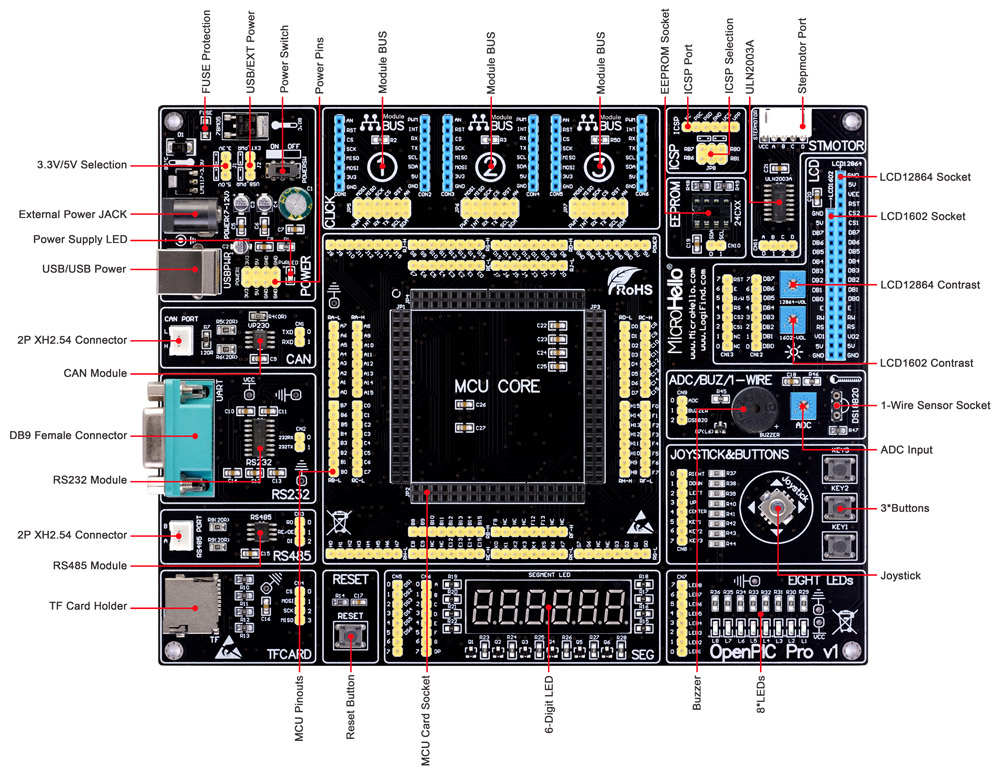
MCU Card Socket
The OpenPIC Pro equips a 144-pin Plug-In Module socket, supporting various 16-bit and 32-bit microcontroller families via PICXXX-XXX V2 series MCU Cards. The MCU Cards supported by the OpenPIC Pro development board are: PIC28-A V2, PIC28-B V2, PIC44-A V2, PIC44-B V2, PIC44-C V2, PIC64-A V2, PIC64-B V2, PIC64-C V2, PIC64-D V2, PIC64-MZ V2, PIC80-A V2, PIC80-B V2, PIC100-A V2, PIC100-B V2, PIC100-MZ V2, PIC144-A V2 and PIC144-MZ V2 etc. which are respectively for most PIC24, dsPIC33, PIC32 microcontroller families in 28-pin, 44-pin, 64-pin, 80-pin, 100-pin, and 144-pin TQFP packages. Using these MCU cards, you can use different microcontrollers on the OpenPIC Pro development board for development, demonstration, and testing.
Interface for Programmer: The standard 6-pin interface, “ICSP,” is for programmers like PICKIT2, PICKIT3, ICD2, etc.
Indicator
- PWRLED: The Power LED Indicator indicates when the power supply is switched on.
- L1: User LED Indicator – helpful in indicating the IO state of the PIC microcontroller.
- L2: User LED Indicator – helpful in indicating the IO state of the PIC microcontroller.
- L3: User LED Indicator – helpful in indicating the IO state of the PIC microcontroller.
- L4: User LED Indicator – helpful in indicating the IO state of the PIC microcontroller.
- L5: User LED Indicator – helpful in indicating the IO state of the PIC microcontroller.
- L6: User LED Indicator – helpful in indicating the IO state of the PIC microcontroller.
- L7: User LED Indicator – helpful in indicating the IO state of the PIC microcontroller.
- L8: User LED Indicator – helpful in indicating the IO state of the PIC microcontroller.
Button Device
- RESET: System Reset Button– for manually resetting the microcontroller.
- KEY1: User Button– state readable by the PIC microcontroller.
- KEY2: User Button– state readable by the PIC microcontroller.
- KEY3: User Button– state readable by the PIC microcontroller.
- UP: Direction UP on Jostick– state readable by the PIC microcontroller.
- DOWN: Direction DOWN on Jostick– state readable by the PIC microcontroller.
- LEFT: Direction LEFT on Jostick– state readable by the PIC microcontroller.
- RIGHT: Direction RIGHT on Jostick– state readable by the PIC microcontroller.
- CENTER: Direction CENTER on Jostick– state readable by the PIC microcontroller.
Power Supply
- The board can be powered in two different ways: with a USB power supply (USB) or using an external DC 7-12V via an adapter connector Jack (POWER(7-12V)).
- 5V or 3.3V power supply is optional for the system(But for most PIC24,dsPIC and PIC32 MCUs,the working volage is 3.3V).
Communication
- RS232 Module with interface – helpful in transferring data to/from the PIC microcontroller using RS232 communication protocol.
- RS485 Module with interface – helpful in transferring data to/from the PIC microcontroller using RS485 communication protocol.
- CAN Module with interface – helpful in transferring data to/from the PIC microcontroller using CAN communication protocol.
- Mini USB connector(Installed on MCU Cards) – shares USB signals with the USB connector and is helpful for the development of dedicated
- USB-embedded host applications, when used in conjunction with a USB capable.
Display
- 6-digit Segment LED Display – useful for displaying the measured value of the user application.
- Socket for 16×2 Character LCD Display Module – helpful in displaying user application strings/ measured value.
- The socket for the 128×64 Graphical Liquid Crystal Display Module helps display user application strings, measured values, and graphical interfaces.
1-WIRE Bus: Socket for DS18B20 Temperature Sensor Module – useful for monitoring the ambient temperature.
Storage
- TF Card Module – useful for saving data.
- IIC External EEPROM Module – helpful in saving data that should be saved when the power supply goes off.
Sound Generator Device: Buzzer –to generate voice using a voltage signal of specified frequency from the PIC microcontroller.
Analog to Digital Conversion: Potentiometer ADC Input: 10 kΩ Potentiometer – useful as an analog signal source for ADC demonstration or user interface purposes.
Motor: Socket for 28BYJ-48-5V stepmother with ULN2003A Darlington Array drive.
System Clock
- 32.768 kHz Low-power Oscillator Crystal Input (Installed on MCU Card)
- Socket for System main Oscillator Crystal(Installed on MCU Card)
External expansion: Three ModuleBUS Socket for hardware expansion compatible with mikroBUS™by Mikroe. It helps attach various hardware expansion boards, extending the platform’s functionality.
Power Supply: The board can be powered in two different ways: with a USB power supply (Type B) or using an external DC 7-12V via adapter connector Jack (POWER(7-12V)).
Programmer/Debugger Requirement: An external PIC programmer or debugger must download code to the PIC on the board. The board supports many Programmers or debuggers, such as PICKIT2, PICKIT3, ICD2, etc.
MCU Cards, which can equip openPIC pro
We have designed over 15 different MCU Cardboards to equip OpenPIC Pro.By now,they are PIC28-A V2, PIC28-B V2, PIC44-A V2, PIC44-B V2, PIC44-C V2, PIC64-A V2, PIC64-B V2, PIC64-C V2, PIC64-D V2, PIC64-MZ V2, PIC80-A V2, PIC80-B V2, PIC100-A V2, PIC100-B V2, PIC100-MZ V2, PIC144-A V2 and PIC144-MZ V2 which is respectively for most PIC24, dsPIC33, PIC32 microcontroller families in 28-pin, 44-pin, 64-pin, 80-pin 100-pin, and 144-pin TQFP packages. Different microcontrollers are supported using these MCU cards, which are placed into the onboard female MCU socket on the OpenPIC Pro Development Board. Click here to see these MCU cards.
Packing List
- openPIC Pro(Comes with the MCU card as the title says): 1pcs
- Dupont 1P-1P(F) DIY Cable: 8pcs
- Dupont 8P-8P(F) DIY Cable: 3pcs
- Crystal(default): 1pcs
- EEPROM(24C64 by default): 1pcs


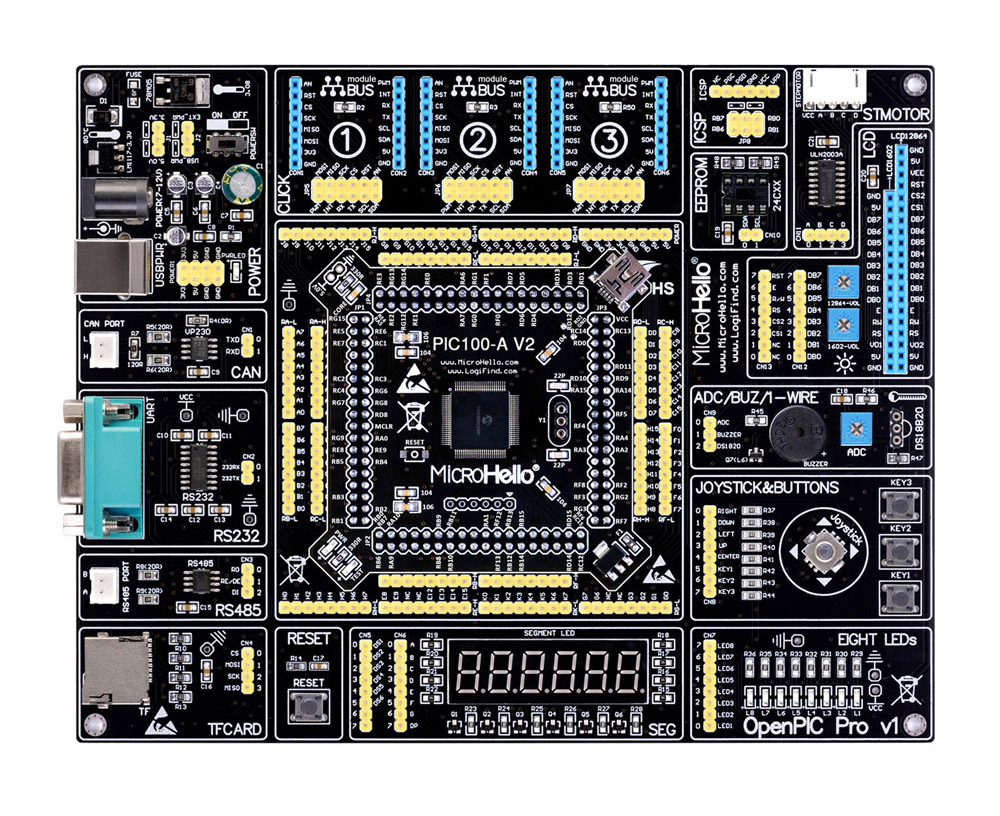
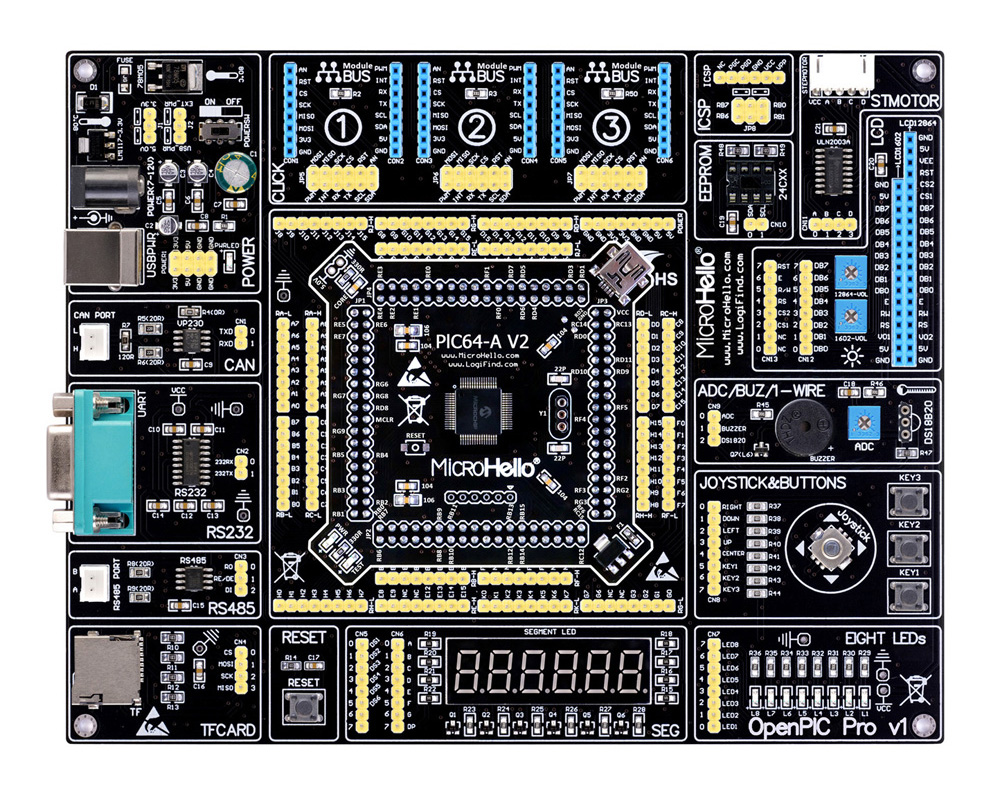
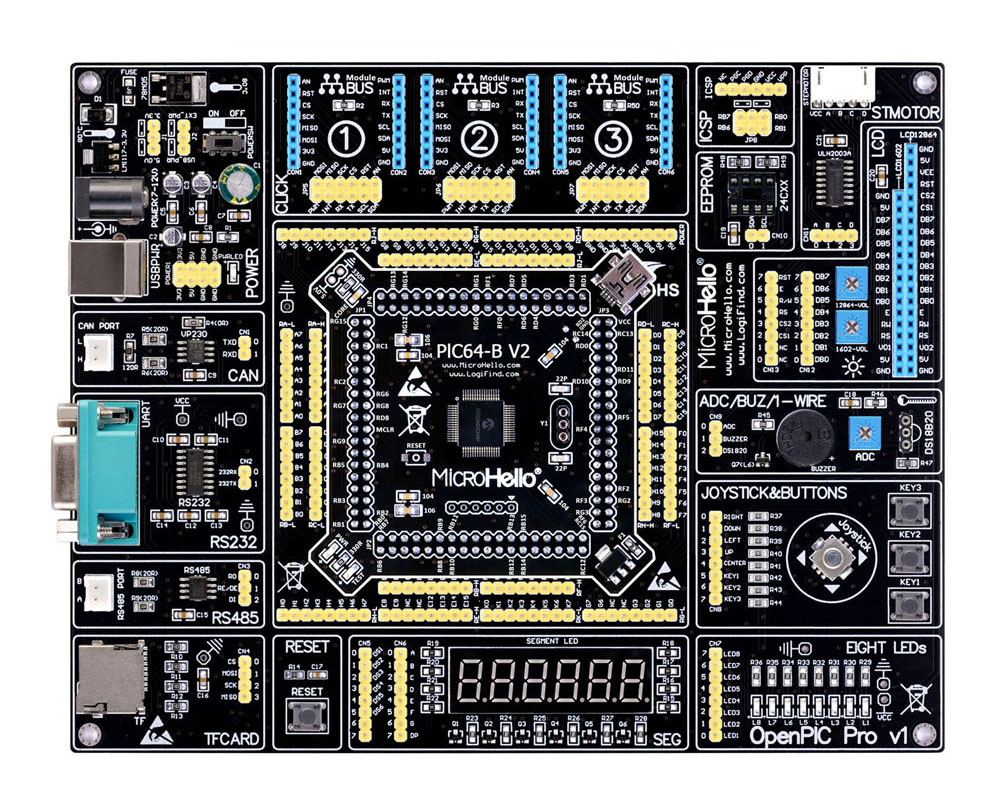
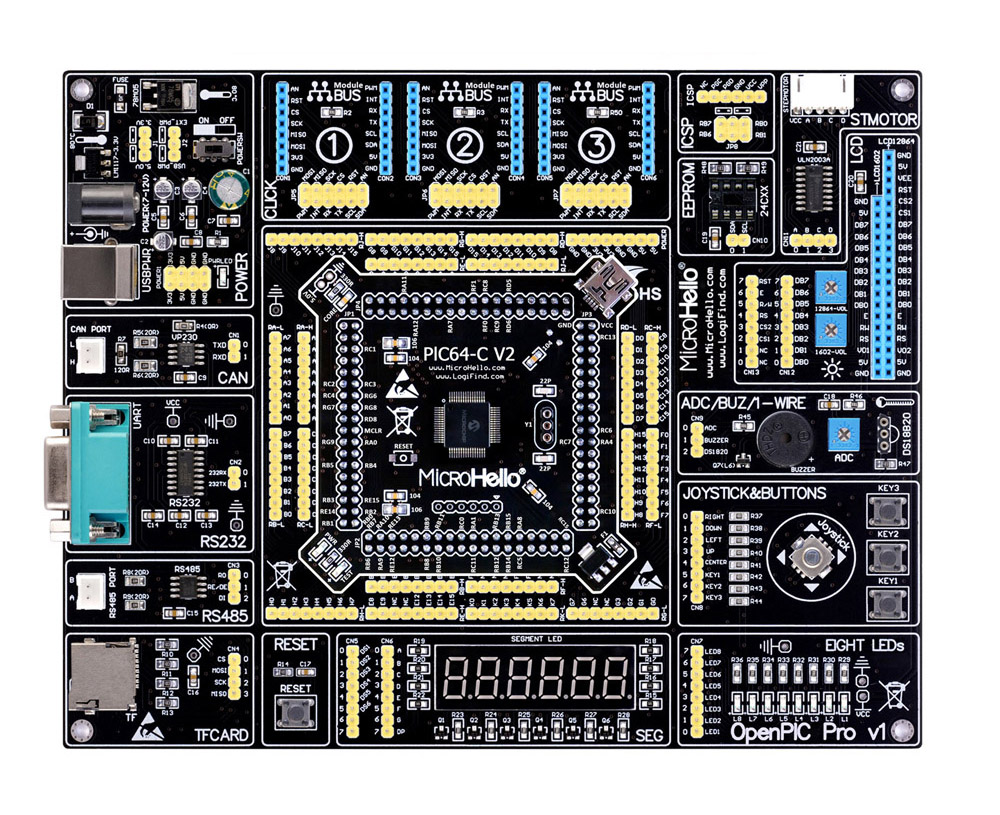
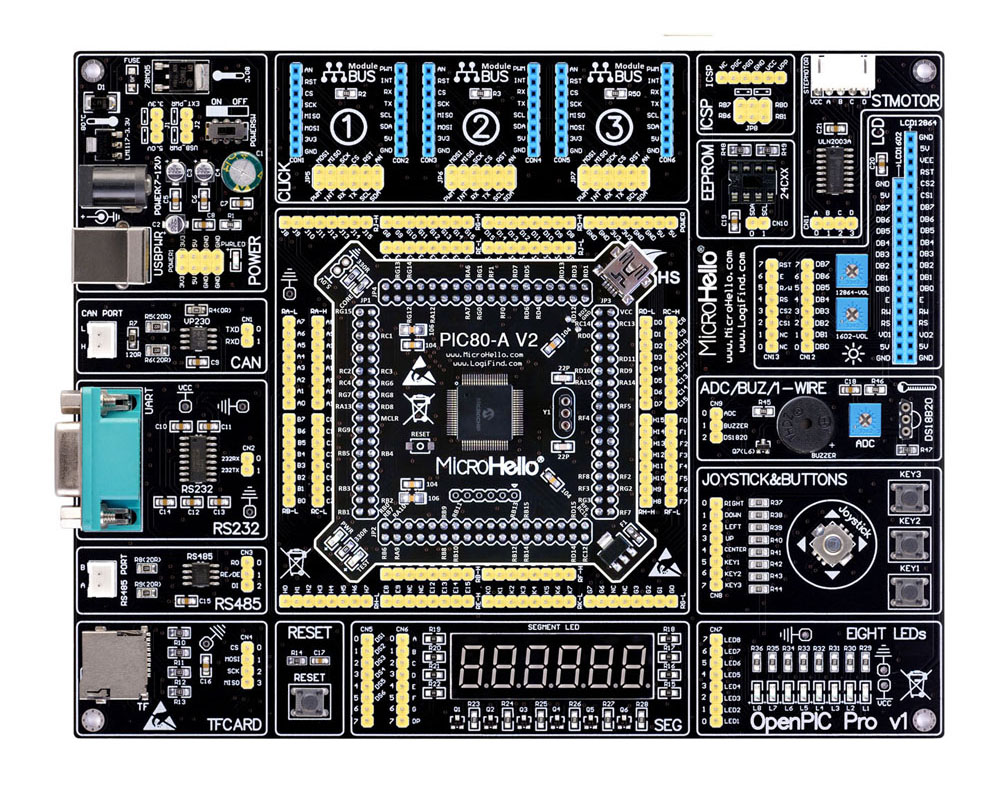

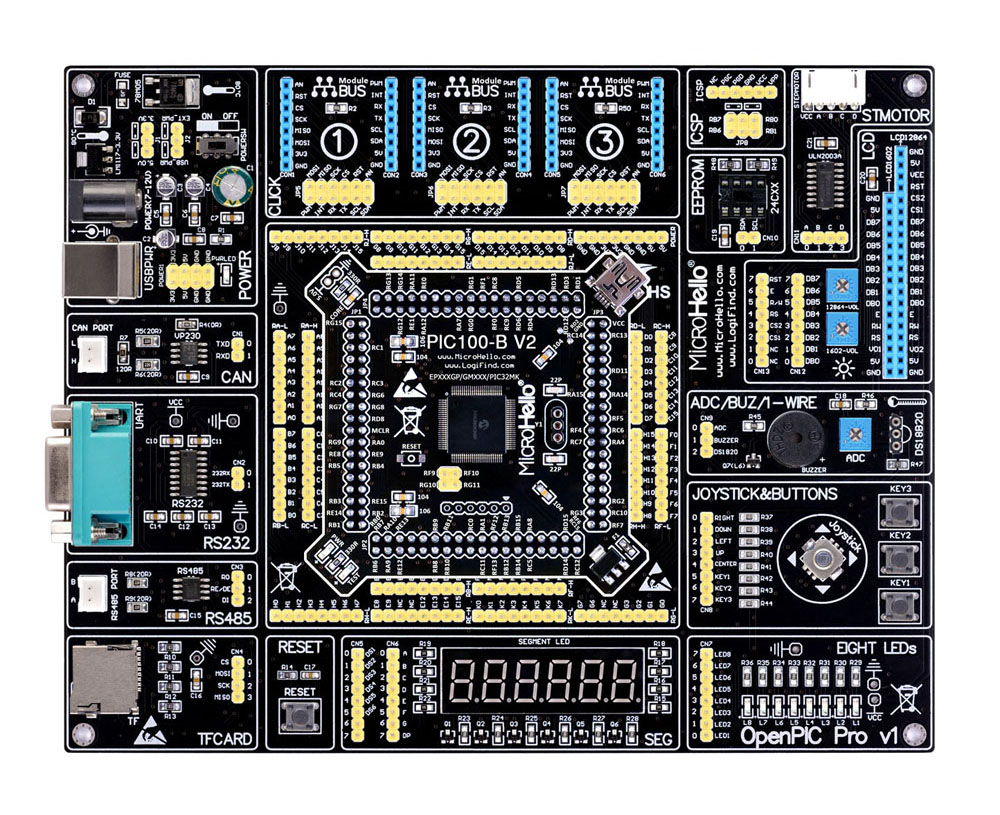
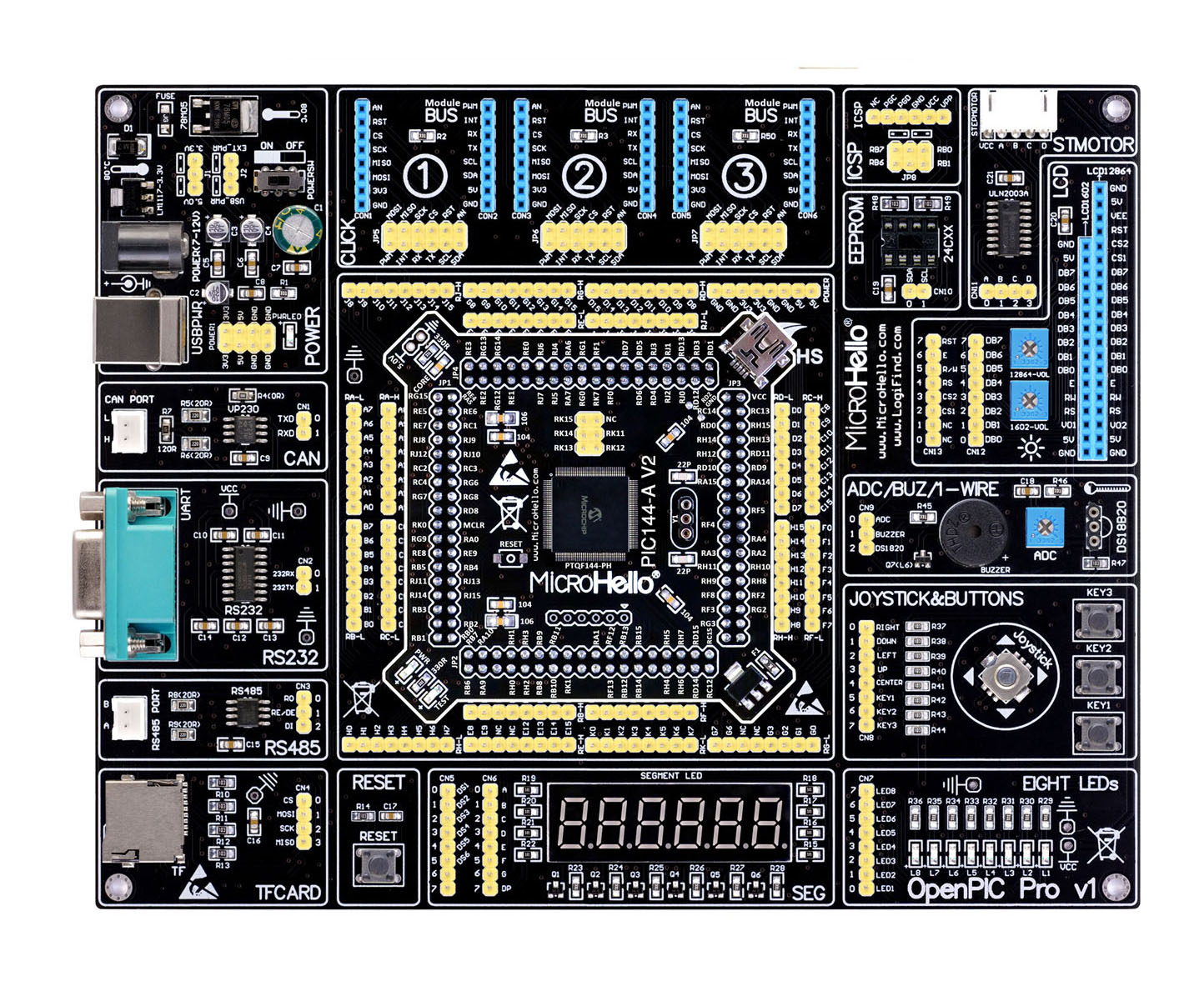
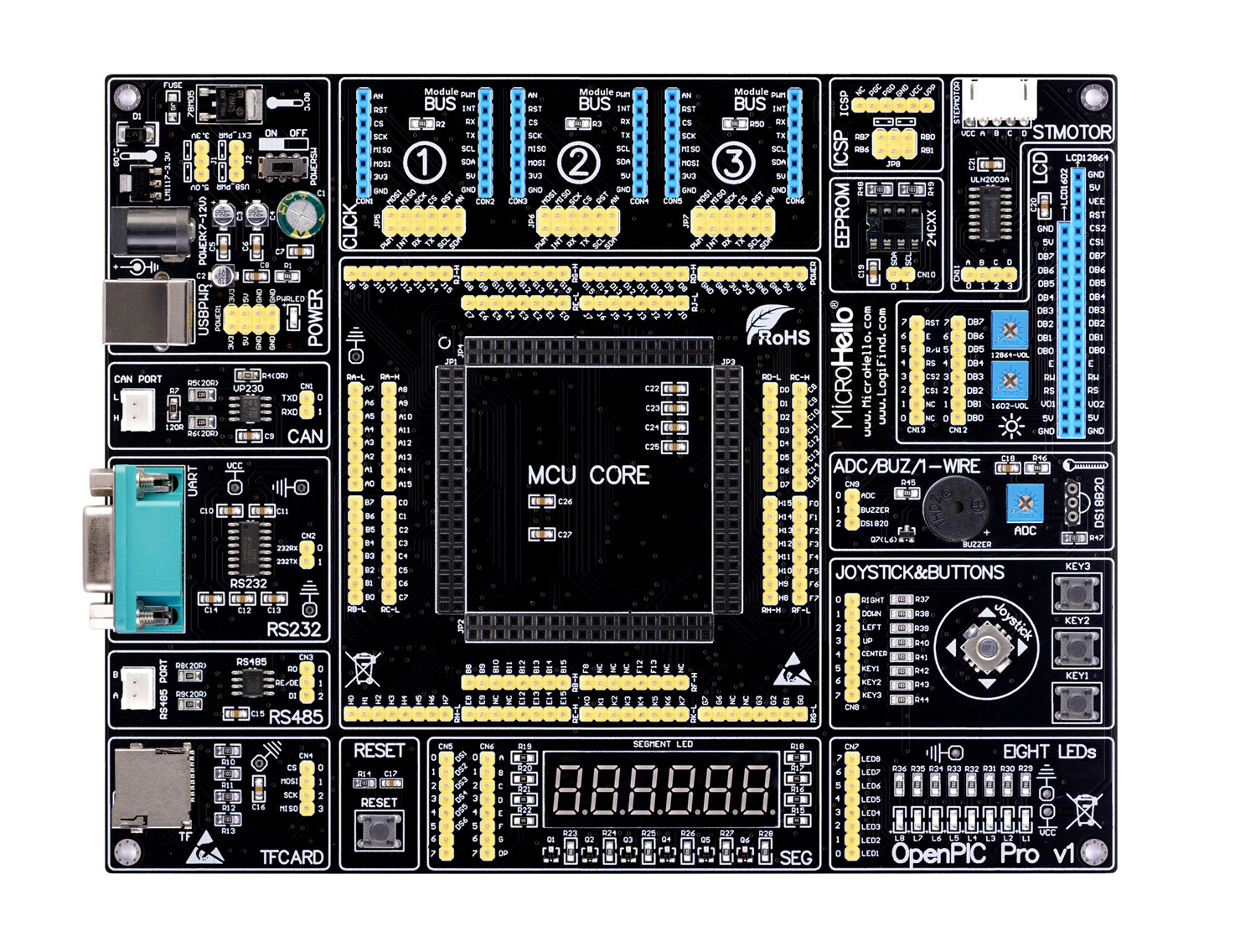
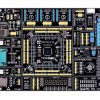
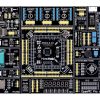
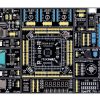

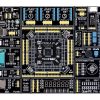

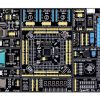
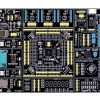
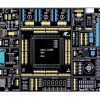


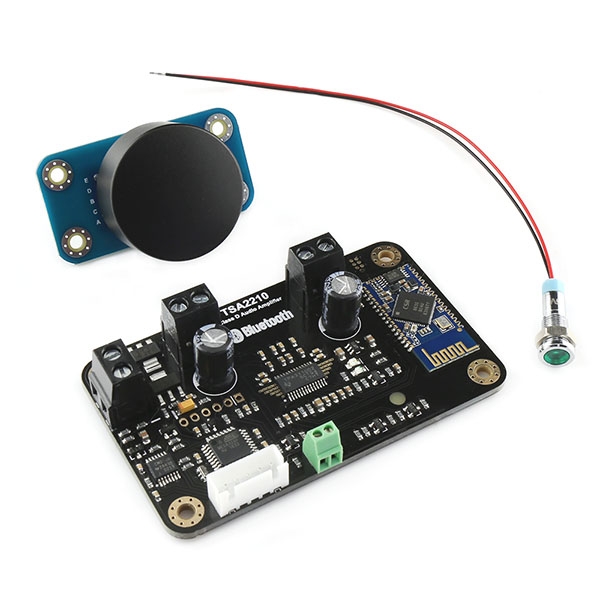
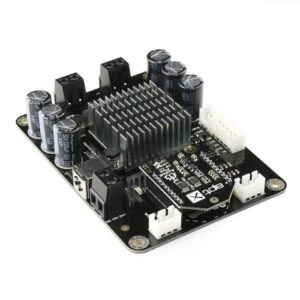
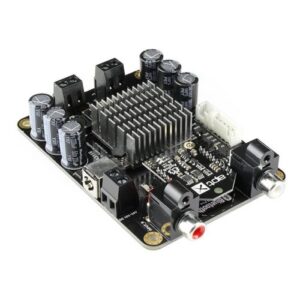
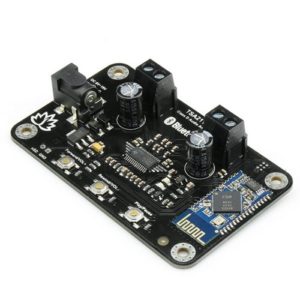

Reviews
There are no reviews yet.